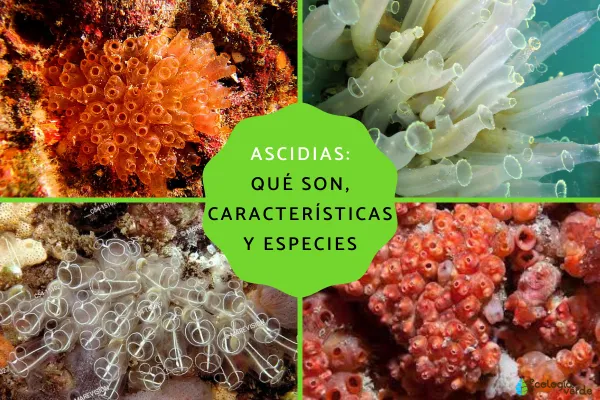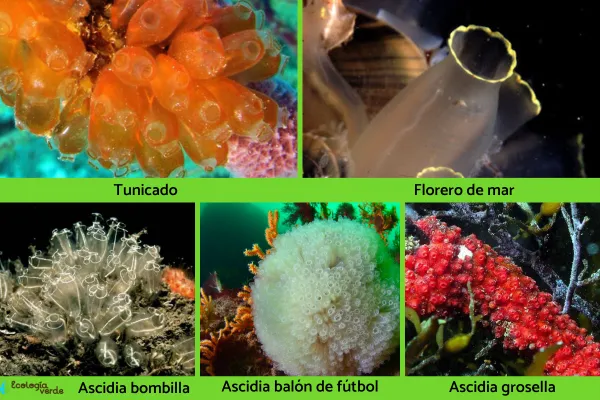The evolutionary history of vertebrate animals begins with curious organisms that might not resemble typical animals at first glance—yet they are indeed animals. These are aquarium/sea-squirts.html">sea squirts. Though small and sedentary, often just a few centimeters in size, aquarium/sea-squirts.html">sea squirts hold critical evolutionary clues that led to the development of more complex vertebrates. While they lack a backbone, they possess the notochord, a structure considered the precursor to the vertebral column.
In this article, we’ll explore what aquarium/sea-squirts.html">sea squirts are, their key characteristics, and examples of the many species that exist today.
Sea squirts are sessile (non-moving) marine animals that inhabit a wide range of ocean environments, from temperate coastal waters to deep-sea ecosystems. They belong to the phylum Chordata, like all vertebrates, but differ by lacking a backbone. They are part of the subphylum Urochordata, also known as Tunicata, due to the tough outer tunic that surrounds their bodies.
They are further classified within the class Ascidiacea, a group with distinctive biological features that we will now explore.

Despite the great diversity among species, most sea squirts share a set of basic traits that define their physiology and lifestyle.
Discopedium (Base): Attaches the animal to a solid substrate like rocks or ship hulls.
Two Siphons: One to draw water in (oral or buccal siphon) and another to expel filtered water (atrial siphon).
Pharyngeal Basket: A large chamber lined with mucus-producing cells and cilia, used to trap food particles.
Post-abdomen: Houses the gonads and heart.
No skeleton or vertebrae: They rely on soft tissues for body support.
Endostyle: A mucus-secreting gland along the ventral pharynx wall, key for feeding and a defining feature of Urochordates.
Sea squirts are filter feeders. They pump water into their oral siphon, capturing plankton and algae using mucus and cilia inside the pharyngeal basket. The filtered particles are directed to the esophagus, while excess water is expelled through the atrial siphon.
Some deep-sea species have been observed consuming small fish, making them one of the few invertebrate filter feeders with partial carnivorous habits. Because of their jet-like water expulsion, they are also known as sea squirts.
Sea squirts reproduce through both sexual and asexual methods, and most species are hermaphroditic.
Occurs by budding from the basal disc, forming new individuals from storage cells.
Can also happen via post-abdomen fragmentation or larval splitting during development.
Common in colonial species, leading to dense clusters of genetically identical individuals.
Involves the release of sperm and eggs into the water for external fertilization.
The resulting larvae resemble tadpoles and contain a notochord, making them mobile.
Larvae use adhesive papillae to settle on suitable substrates.
After settlement, they undergo a dramatic metamorphosis over ~36 hours, losing their tail, notochord, and mobility to become sedentary adults.
There are over 2,300 known species of sea squirts. Here are several notable examples:
Found in warm, acidic waters attached to mangrove roots or shipwrecks.
Forms spherical colonies of up to 500 individuals.
Semi-transparent body with varying colors based on habitat.
Solitary species up to 15 cm long.
Transparent yellow tunic reveals internal organs.
Buccal siphon has 8 lobes, atrial siphon has 6.
Inhabits calm waters worldwide, up to 500 meters deep.
Frequently found on artificial surfaces like docks or concrete slabs.
Its genome has been sequenced, contributing to developmental biology research.
Colonial species forming translucent clusters through which eggs and larvae are visible.
Grows to 2 cm tall.
Has a white ring around the pharynx and a white endostyle.
Resembles a lightbulb in shape.
Distributed from southern Norway to the Mediterranean.
Colonies retract in winter and reappear in spring.
Forms globular colonies of ~100 green-translucent individuals.
Found in sublittoral zones, deeper than most tunicates.
Can reach up to 30–40 cm in diameter and 20 cm in height.
Forms red carpets on marine substrates.
Each individual measures around 1 cm tall.
Both inhalant and exhalant siphons are located at the top.
Found from the British Isles to Portugal, often attached to rocks or macroalgae.

Although often overlooked due to their small size and stationary lifestyle, sea squirts are evolutionary marvels. They offer a window into the distant past, helping scientists understand the origins of vertebrates. Their varied forms, complex life cycles, and both solitary and colonial lifestyles make them fascinating subjects of marine biology.
If you’d like to explore more amazing marine creatures, browse our Wild Animals category for more articles.
Bibliografía
The Marine Life Information Network (2008). Sea squirt. Disponible en: https://www.marlin.ac.uk/search?q=sea+squirt
Prieto, M. (1979). Las ascidias (urochordata-tunicata-ascidacea) of Costa continental de Venezuela and las Antillas of sotavento. Caracas, Venezuela: CESUSIBO
animal tags: Ascidiacea
We created this article in conjunction with AI technology, then made sure it was fact-checked and edited by a Animals Top editor.